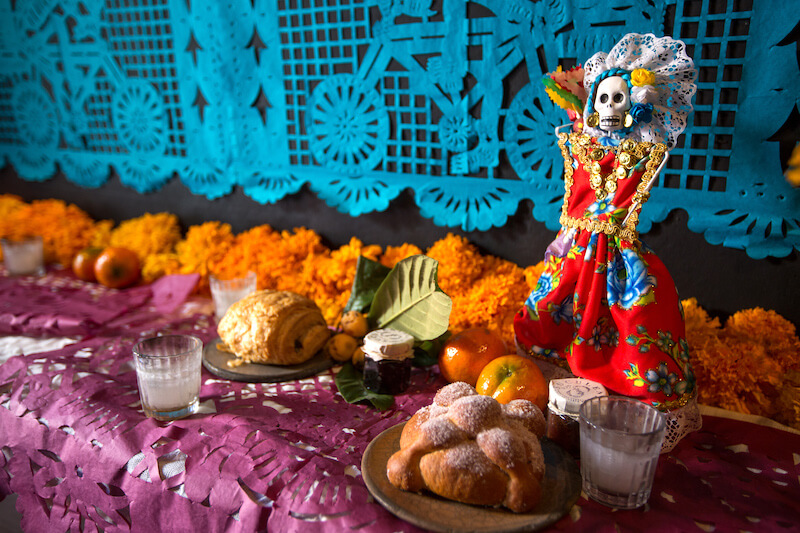
The Day of the Dead – Oaxaca, Mexico
The Day of the Dead – Oaxaca, Mexico
It is the time of the year when we start feeling nostalgic. The days are getting shorter. It is getting darker faster, and we feel like being cozy at our home with a cup of tea.
I invite you to make a coffee or tea, light up a candle, listen to this newsletter full of cheer, and travel adventure to Oaxaca, a vibrant Mexican town where magic happens during the Day of the Dead (Dia de los Muertos). Experience a new culture, full of art, and tradition.
Best time to go to Oaxaca
The Day of the Dead takes place on November 1-2. I recommend staying an extra few days before arriving on October 28th and staying a few days after. You can combine this festival with a few days on the beach after the celebrations.
Why do Mexicans celebrate the Day of the Dead?
Different days of the festival correspond to different spirits of the departed. The Mexicans believe that the veil between the world of living and the dead is lifted, so the spirits of the departed can return each day at midnight. That is why many celebrations are at night. It is believed that the spirits of children come first followed by adults and sometimes dogs.
In pre-Hispanic Mexico, it was disrespectful to mourn death. The Mexicans see death only as a physical separation and mourning is treated like the deceased is no longer part of the community. Therefore, the Day of the Dead is a big celebration to keep the departed ones alive and see death as a normal cycle of life.
Celebrations
The Mexican families visit the graves of their departed family members to invite them back home. They decorate the graves with lights, flowers, and decorations.
I recommend you book a trip or go by yourself because it is an amazing experience to witness. The best cemeteries for tourists are Panteon de San Sebastian and Panteon de Santa Maria.
There are some rules it would be wise to adhere to. Never drink at the cemetery. Do not wear a skull make-up or costume when you go to the cemetery. It is about respect for the families and the departed. Wear modest clothes. Always ask for permission if you want to take a photo. Do not touch or decorate altars.
See the Parades
The best place for the parades is the downtown of Oaxaca (The Centro). It is convenient if you book your hotel by the downtown. The parades (comparsas) will be in costumes and very often with scary make-up. There will be music, dances, and lots of vendors. A local band will walk in circles playing music and singing. People will join in dancing and drinking while following the band.
Ofrendas (Offerings)
Families build altars called ofrendas to honor their loved ones who passed away. This guides the right departed ones to the right house. The altars are decorated with orange marigold flowers, candles, photographs, and favorite food and drink of the deceased. The offerings sustain their spirits while on a journey from the world of living and the world of the dead. Pan de Muertos, which is a sort of sweet bread, is typically placed by the ofrenda as well. The families will eat the food as a part of the offering ritual.
Vocabulary
nostalgic – characterized by exhibiting feelings of nostalgia (nostalgiczny)
cozy – giving a feeling of comfort, warmth (przytulny)
cheer – optimism, joy (radość)
combine – unite, merge (połączyć)
spirits – the nonphysical part of the person, the soul (duch)
departed – a person dead (osoba zmarła)
veil – a piece of fine material worn by women to conceal the face (welon)
lifted – raise to a higher position or level (podnieść)
disrespectful – showing lack of respect (nieokazujący szacunku)
mourning – the expression of deep sorrow for someone who died (żałoba)
adhere – follow the practice of (stosować się do)
modest – relatively moderate (skromny)
marigold – a plant of the daisy family, typically with yellow, orange or copper-brown flowers (aksamitka)
ritual – a religious or solemn ceremony consisting of a series of actions performed according to a prescribed order (rytuał)